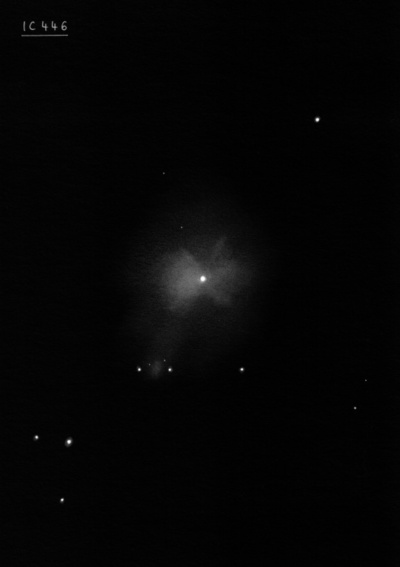
E.E. Barnard visually discovered IC 2167 = IC 446, along with IC 2169, on 11 Oct 1888 with the 12-inch refractor at Lick Observatory. He noted "a 9 1/2 mag star with largish faint nebula, a little heavier following."
He later found it again photographically on 24 Jan 1894 with the Willard 6" lens and announced it in "Photographic Nebulosities and Star Cluster Connected with the Milky Way" (Astronomy and Astrophysics, Vol XIII, No 3). Based on this discovery note, Dreyer catalogued it as IC 446. Barnard states, though, he first found it visually around 1888 "while sweep over this region..I also found a 10 mag nebulous star about half a degree north preceding 2245." His position in this paper is accurate. Apparently Barnard also sent Dreyer his original visual discovery, so IC 2167 is based on his earlier visual discovery. This object is a bi-polar reflection nebula. Listed in article on bi-polar nebulae by Ronald Stoyan in Deep Sky Observer #12.
400/500mm - 17.5" (1/23/93): fairly faint reflection nebula surrounds a mag 10-11 star. This bi-polar nebula is fairly large, about 2.5' diameter. Appears to extend further (or is brighter) on the south side. Bordered by three collinear mag 13 stars on the south side.
Notes by Steve Gottlieb